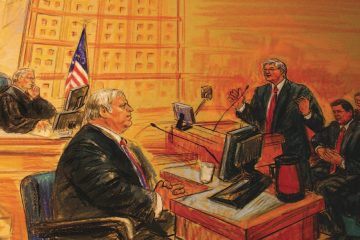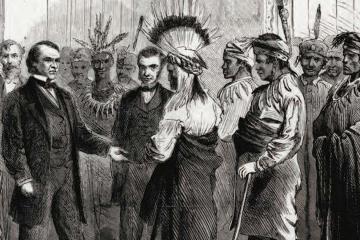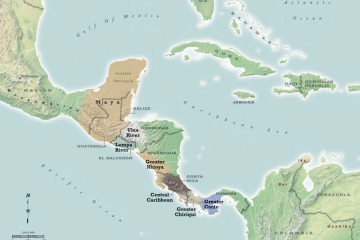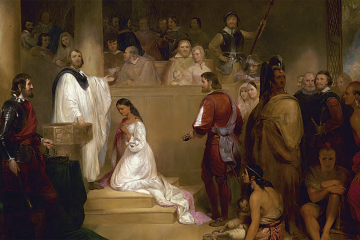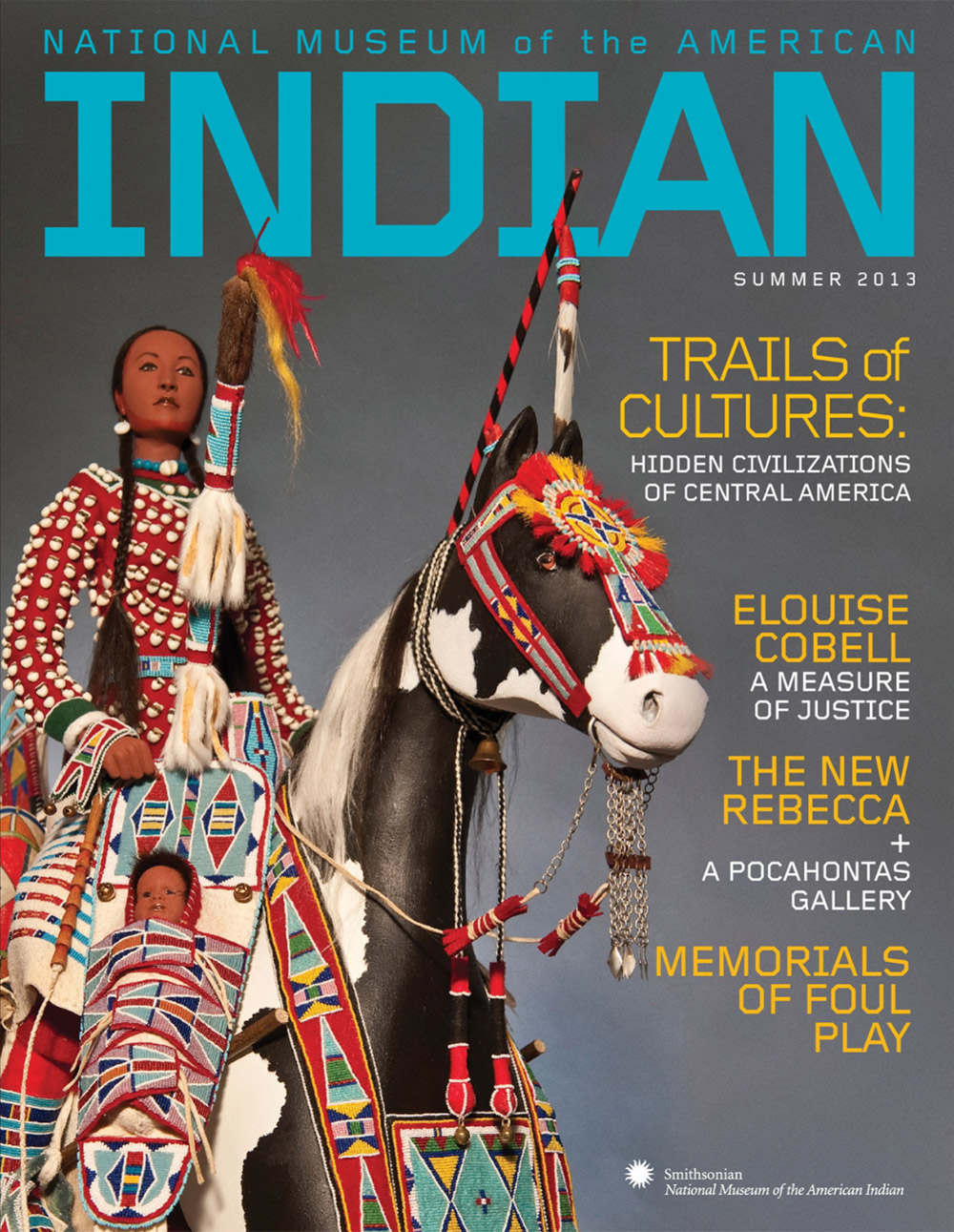
On the Cover
The strength of the people comes from its women. This saying, so appropriate to this issue, shines through this lovely composition Maternal Journey by Rhonda Holy Bear (Cheyenne River Lakota), part of the new exhibit Grand Procession in the Sealaska Gallery, Second Level, at the National Museum of the American Indian in Washington, D.C., through Jan. 5, 2014. This exhibit celebrates Native identity through 23 colorful and meticulously detailed objects that are much more than dolls. Traditionally made by female relatives using buffalo hair, hide, porcupine quills and shells, figures like these have long served as both toys and teaching tools for American Indian communities. Outfitted in intricate regalia, these dolls, representing Plains and Plateau tribes, are on loan from the Charles and Valerie Diker Collection.
Rhonda Holy Bear (Cheyenne River Lakota), Maternal Journey (detail), 2010. Wood, hide, cloth, paint, glass beads, hair, shell, metal.

